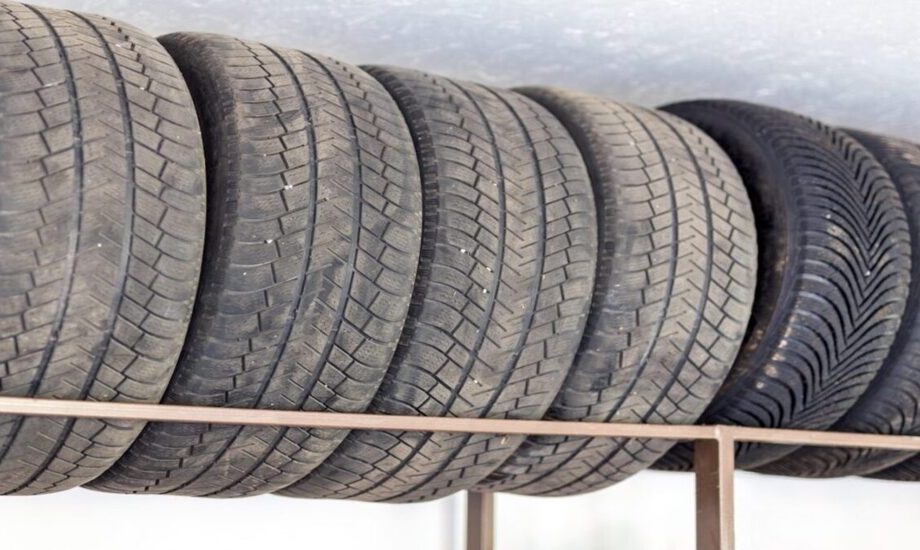Proper tyre storage is often overlooked, yet it plays a crucial role in maintaining tyre safety and extending their lifespan. Whether you are storing seasonal tyres or keeping a spare set for your vehicle, how you store them can make the difference between reliable performance and early deterioration. Two common problems that arise from poor storage are cracks and dry rot, both of which compromise tyre strength and safety.
This guide explores how to store tyres properly to prevent these issues, especially in hot and dry climates like the UAE.
Why Proper Tire Storage Matters
Tyres are made of rubber compounds that are vulnerable to environmental factors such as heat, sunlight, ozone, and moisture. When tyres are left in poor conditions, they lose essential oils and flexibility. This leads to small surface cracks that can grow over time.
Dry rot, also called weather cracking, occurs when tyres become brittle and start to break down due to prolonged exposure to oxygen, UV rays, and fluctuating temperatures. Once dry rot sets in, tyres lose their grip and are at risk of blowouts.
Proper storage shields tyres from these damaging elements, helping them remain flexible, strong, and safe to use even after months of inactivity.
Step-by-Step Guide to Storing Tyres
Here are practical steps to protect your tyres during storage:
1. Clean the Tyres Thoroughly
Before storing tyres, wash off dirt, road grime, brake dust, and chemical residues. Use mild soap, water, and a soft brush. Make sure to clean both the tread and sidewalls.
Allow the tyres to dry completely, as trapped moisture can cause mould growth or corrosion on steel belts inside the tyre.
2. Avoid Applying Protective Dressings
While tyre shine or protective dressings may make tyres look good, they can attract dust and may not be suitable for long-term storage. Tyres already contain protective oils in their rubber compounds. Adding products may interfere with the natural ageing process.
3. Store in a Cool, Dry, and Dark Place
Heat, sunlight, and ozone are the biggest enemies of stored tyres. Always store them indoors in a cool and ventilated area such as a garage or storage room. Keep them away from windows, hot pipes, electric motors, or furnaces, all of which generate heat or ozone.
If indoor storage is not possible, place tyres inside opaque, UV-resistant bags and store them off the ground. Seal the bags to reduce exposure to oxygen and moisture.
4. Keep Tyres Away from Chemicals and Solvents
Ensure the storage area is free from petrol, lubricants, and cleaning chemicals. These substances can damage rubber compounds and accelerate dry rot.
5. Position Tyres Correctly
How you position the tyres during storage matters:
Without Rims
Store upright on their treads, not stacked. This prevents flat spots from forming. Rotate them occasionally to maintain shape.
With Rims
Store stacked horizontally or hang them on hooks to reduce stress on the rims. Inflate them to the recommended pressure before storing.
6. Use Tyre Covers or Storage Bags
Protect tyres from dust and moisture using purpose-made tyre covers or large, airtight plastic bags. Remove as much air as possible before sealing the bag. This slows down the oxidation process that leads to cracks.
Signs of Cracks and Dry Rot to Watch For
Even with good storage habits, tyres should be inspected before use. Look for:
Fine cracks on the sidewalls or between tread blocks
A dull, greyish appearance instead of deep black
Brittle or stiff rubber texture
Small pieces of rubber flaking off
If you see any of these signs, the tyres are no longer safe and should be replaced. Driving on dry-rotted tyres increases the risk of blowouts and poor traction, especially at high speeds.
How Long Can Tyres Be Stored Safely?
When stored properly, unused tyres can last up to six years from the date of manufacture. Always check the DOT code on the sidewall, which indicates the week and year the tyre was produced.
While age is important, condition matters more. Even an older tyre may be safe if stored well, while a newer tyre stored poorly can degrade quickly.
Common Mistakes to Avoid
Many drivers unknowingly damage their tyres during storage. Avoid these mistakes:
Storing tyres in direct sunlight or outdoors
Leaving tyres on a vehicle that is unused for months without moving it
Stacking tyres without rims on top of each other for long periods
Failing to clean tyres before storing them
Placing tyres near heat sources or ozone-emitting devices
Avoiding these errors will help keep your tyres safe and ready for the road.
Final Thoughts
Tyres are one of the most vital safety components on your car. Investing time and effort into proper storage is far cheaper than replacing tyres prematurely due to cracks or dry rot. By cleaning them, protecting them from sunlight, sealing them in airtight bags, and keeping them in a cool, dark place, you can ensure they stay in top condition for years.
For drivers in the UAE who rotate between summer and winter sets or keep spare sets on hand, following these storage steps is essential. If you are unsure about the condition of your stored tyres, have them checked by a professional before reinstalling them.
Proper tyre care ensures your safety on the road and saves money over time, especially when storing tyres during off-seasons. If you want expert advice and inspection services, you can find reliable help for your tyre dubai needs at trusted local workshops.
 :
https://www.pinterest.com/pitstoparabia2015/
:
https://www.pinterest.com/pitstoparabia2015/

